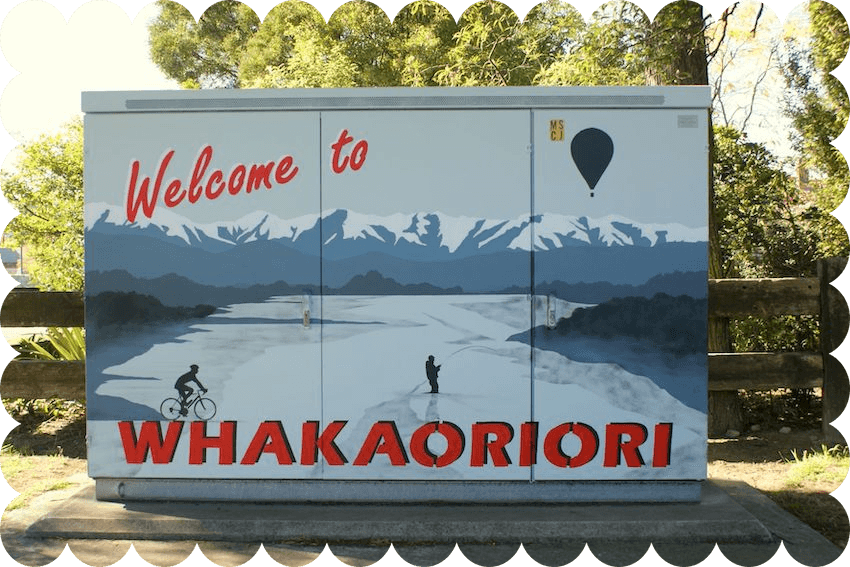An artist’s attempt to honour bicultural place names in the town she lives has been tarnished by vandalism.
When Masterton-based visual artist Paula Coulthard was commissioned to paint a telecommunications box at the entrance to her North Island town eight years ago, she decided to do so in a style reminiscent of mid-century travel posters.
“Welcome to Whakaoriori”, the sign proudly proclaimed in brilliant cherry red paint atop a blue-ish scene of the Tararua Range, a fly fisher, a cyclist and a hot air balloon.
Whakaoriori is the original name given to the area and is in reference to the melodious birdsong in the region, which was said to be so soothing that mothers did not need to sing lullabies or oriori to their children. Located at the entrance to Masterton town limits on State Highway 2, Coulthard felt both the scene and the message were a fitting welcome to the largest town in the Wairarapa.
Now, the front of the artwork simply reads “Welcome to”.
On Monday, Coulthard and her husband Simon noticed the sign had been vandalised, with a near perfect grey colour match paint used to erase the te reo Māori name.
“It’s just very sad,” says Coulthard. “That it’s happened in our community and that somebody feels so much hate that they’ve come out with a spray can.”
The artwork, Coulthard explains, was originally commissioned by Chorus – one of many facelifts of the ubiquitous cabinets that were undertaken around the town of Masterton and across the country.
At the time, Coulthard’s decision to include both names for the town was purposeful. “Masterton is the official name,” she says, but “it also has the name Whakaoriori, which is the original name of that area and I thought that should be recognised as well, because places often have more than one name.”
The erasure of the name is perhaps reflective of attitudes that bubble just below the surface throughout the region, she says. “I can only guess why somebody would do that and my guess is it’s racist,” she says.
Coulthard’s husband Simon Miller, who reached out to The Spinoff about the vandalism via email, seconds that and says “it’s such a specific attack.” He notes that the other side of the box is painted too, with the phrase “Kia ora from Masterton”. That side remains untouched. “You can see how carefully it’s been done,” Miller says, “the only bit that’s been vandalised is that one word.”
“This artwork is a celebration of the beauty of Whakaoriori/Masterton and the welcome that people can expect when they come here,” he said in his initial email. “The depth of Whakaoriori reality cannot be painted over.”
To Miller, the action taken is symptomatic of a lack of understanding of local history and especially of the local history that existed prior to colonisation. “It’s reflective of a fear of what the real acknowledgement of that name might mean,” he adds.
While Coulthard hasn’t heard from Chorus yet, she’d be keen to repaint the box. Would she do anything differently next time? “I was actually wondering if I’d redo the whole thing and make an even louder Whakaoriori statement as a response.”
A Chorus spokesperson said in an email that “seeing any artist’s work being vandalised is extremely disappointing and sad for the local communities where they are situated”.
“This mural is protected by an anti-graffiti shield, as are all our murals around Aotearoa, and can be cleaned,” the spokesperson said. They added, “We’ll certainly be looking to do that and we’d be happy to talk to the artist directly”.
Follow our te ao Māori podcast Nē? on Apple Podcasts, Spotify or your favourite podcast provider.





